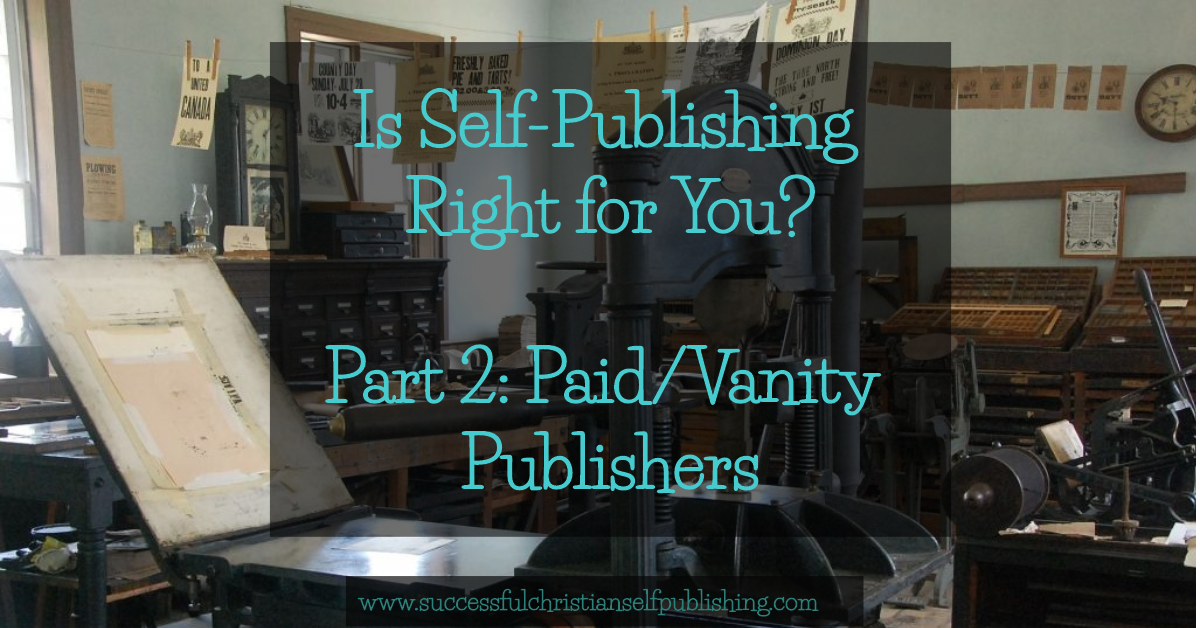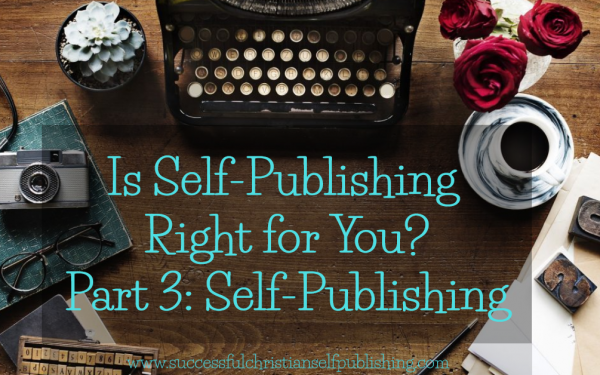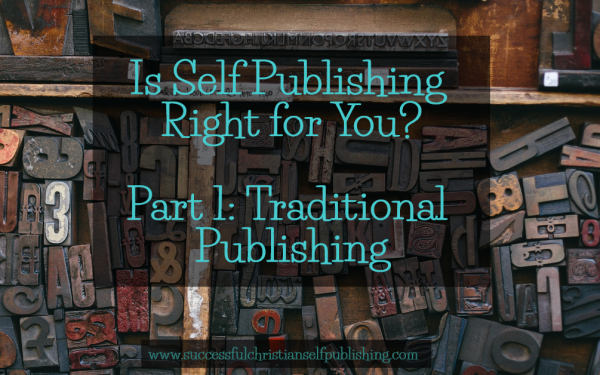Is Self Publishing for You? Part 2: Paid/Vanity Publishing

This blog focuses on self-publishing. Self-publishing is not for everyone. It’s probably a really good idea to define exactly what self-publishing is and exactly what self-publishing isn’t to make an informed decision about whether self-publishing is a solution you want to embrace.
There are essentially three types of publishing:
2) Paid Publishing
3) Self-Publishing
Each comes with some pros and cons. Each has unique requirements and challenges. It is important to understand and consider these distinctions before moving forward.
Paid Publishing
Paid publishers are often pejoratively referred to as “Vanity Publishers” or “Vanity Presses” because the AUTHOR pays out of pocket to have this company publish his or her book. Either for a usually rather high flat rate or for so called “ala carte” pricing for selected services that the author pays the publisher — and sometimes the author shells out a lot of money — to ultimately see his or her book in print.
Usually, the manuscript is mechanically edited. Many paid publishers will “upsell” authors to pay more for more thorough editing. Necessary artwork, such as interior graphics and cover artwork for the manuscript, is usually either based on a common template or leverages common and freely available stock art. Many paid publishers attempt to “upsell” authors to pay more for better graphics or professionally designed covers. Typesetting and formatting is usually based on a template. While adequate, there is usually little attention to detail and few if any personal touches. Typesetting and formatting are often “upsell” points as well.

Are you beginning to see a pattern?
Most paid publishers will not market the manuscript beyond issuing an impersonal “shotgun blast” press release or posting lots of social media links. Most will “upsell” the author to purchase galley proofs. Most will “upsell” the author to purchase dozens or hundreds of printed copies for personal use.
Depending on the nature of the contract, the paid publisher may retain the rights to the work, in which case the publisher is obliged to pay royalties based on sales. This is usually offset by various fine print fees or margins that must first be met.
If the contract is not set up for the publisher to retain rights, in most cases the publisher performs zero marketing or any follow-up once the books are in print, unless such services are paid for by the author. Essentially, the author has just funded a print run.
While there are rare cases of a “Vanity Press” book breaking out, and you can find these oddities prominently displayed and highly touted on each and every paid publisher’s website, the truth is it is very rare for these books to find large acceptance in the marketplace.
To note: vanity presses are not, by definition, companies that help authors self publish books. There are companies out there that offer formatting or editing or any other number of contracting services for authors in a one-stop shop. If in the end, the author is NOT the one hitting “publish” and receiving 100% of the royalties from a book, then the company is a vanity/paid publisher.
Pros: Other than writing the actual manuscript, the author does not personally have to perform a great deal of work. Paid publishers react rapidly to author requests and the lag time between manuscript delivery and release is very short. Authors usually get as high or as low quality of a final product as they are willing to pay. Losses incurred by paying the publisher are a valid tax write off as a business loss.
Cons: There is no real guarantee that the manuscript will be professionally treated, even for fees. There is rarely a return on the initial investment. There is very rarely an above baseline profit. Because of reputation, paid publisher products are not well accepted by retailers or savvy readers. There is often a discouraging emotional toll on the author when the book performance doesn’t fully meet the paid publisher’s promises.
Paid Publishing Model:
1) AUTHOR pays publisher. PUBLISHER is paid by author.
2) PUBLISHER owns rights under contract. AUTHOR surrenders rights under contract.
![]()

With nearly a million sales, Hallee Bridgeman is aUSA TODAY best-selling and award-winning Christian author who writes action-packed romantic suspense focusing on realistic characters who face real-world problems. Her work has been described as everything from refreshing to heart-stopping exciting and edgy. Hallee has served as the Director of the Kentucky Christian Writers Conference, President of the Faith-Hope-Love chapter of the Romance Writers of America, is a member of the American Christian Fiction Writers (ACFW), the American Christian Writers (ACW), and Novelists, Inc. (NINC). An accomplished speaker, Hallee has taught and inspired writers around the globe, from Sydney, Australia, to Dallas, Texas, to Portland, Oregon, to Washington, D.C., and all places in between. Hallee loves coffee, campy action movies, and regular date nights with her husband. Above all else, she loves God with all of her heart, soul, mind, and strength; has been redeemed by the blood of Christ; and relies on the presence of the Holy Spirit to guide her.



